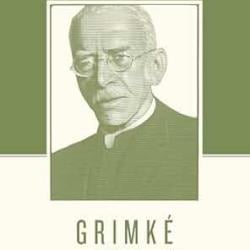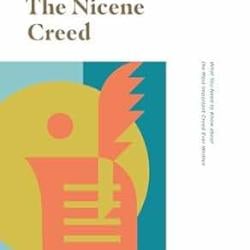Reading through Common Grace, Preface through Chapter 3
In his Preface, Kuyper tells us that thinking about common grace (especially thinking about it well) has been a serious deficiency in Reformed thought. There are historical reasons for this, but in our time (i.e. the late 19th/early 20th centuries) we’re seeing a renaissance as the Reformed begin to re-think what Christ’s sovereignty over all of creation actually means in practice. These thinkers are especially reflecting on what this sovereignty means outside of the church. As we’re engaging in this kind of thought, we must resist the temptation to retreat from the world and try to dwell solely in the realm of ‘particular’ grace (that is, the kind of grace that converts believers and sets us apart from the world). Instead, we must be ready to engage the world on its own terms.
When we’re thinking about grace as Christians, we both naturally and Biblically with ‘particular’ grace–the grace that saved us from our sins, turned us from our rebellion to Christ in repentance and faith, and applies our sins to the atoning punishment on the cross in penal substitution and applies the obedience of Christ’s life to us in exchange. This is the result of election and is for the individual alone. This kind of grace forms the heart of the church.
And yet, we are not isolated individuals. Election happens in the context of the covenant. Trying to treat with grace outside of the background of the covenant has the result that “the doctrine of election is mutilated and assurance is lost as the Spirit is pursued without the Son.” (2) Salvation is personal, but it is salvation into the vine and the body of Christ.
So, in back of salvation is the church and the covenant, and in back of the church and the covenant is the created world and created humanity. Being a part of the church does not negate our origins in “family, homeland, or world.” (3) While theologically we (rightly) begin with creation and work our way through the fall into salvation, the felt order of experience in a believer’s life is 1) I am saved; 2) I am assured in the covenant, which happens by means of 3) the pre-existent nature of God the Creator of all things. (pg 4)
And so we begin to see that there are different kinds of grace which we must reflect on: particular grace (that which applies directly to me–a “divine and supernatural light immediately imparted to the soul“); covenant grace (that which applies to the church); and common grace (that which applies to the whole world). (4-5)
This book deals with the third of those kinds of grace, but in doing so cannot ignore the first two types. This is a subject which has never been thoroughly or systematically explored, and yet which is all around us. Even the animals participate in common grace, after all! (6-7)
We’ll see just what “common grace” is as we walk through the book; the short definition given at the end of chapter one is that common grace is found in God’s temporary forbearance with sin and restraint of sin and its effects in unbelievers and in the world. It is the way we can confess that sin is everywhere and that the world is not completely fallen.
The starting point for the doctrine of common grace is the Noahic covenant. This covenant is, interestingly, more detailed that that given to either Adam or Abraham, so we are clearly to spend time with it and come to know it well. This is not of course to say that Noah=Adam in importance. Adam is the source of all humanity, while Noah is only a part of the recreated-post flood world (his wife and his daughters-in-law were not from him). Noah is instead our “second progenitor”, not our federal or biological head. (12) Still, he was a focus of human history and a reset of creation and history. He is the means by which the “ancient church” survived the judgment of the flood and enter from the post-fall world into a “new condition.” (13)
And this post-fall/pre-flood world is something of a mystery. We know the broad shift from Paradise in Genesis 1 and 2 to everything thought being always wicked in Genesis 6, and it seems that once Enoch is removed from the scene God’s people are reduced to a single family. (14) The two colossal upheavals that bookend this period are 1) the Fall and 2) the Flood.
In terms of the Fall, 1) the earth is now cursed; 2) thorns and thistles grow instead of useful plants; 3) animals are now different; and 4) paradisaical beauty “languished and vanished.” (15) The result was a changed earth, such that evil appears to have been ubiquitous.
The Flood likewise changed the earth, and was likewise caused by God’s wrath against our sin–and there’s more such wrath yet to come! (16) Yet, the Second coming destroys and restores, whereas the result of the Fall and the Flood seems to have included only destruction. (16-17) Until that second coming, the promise of the Noahic covenant is that the earth will not be destroyed in such total and cataclysmic ways. Disasters will only be regional, and global changes will be moderate or slow enough to not count as a cataclysm.
These promises should give us a sense of peace for this life and for all people who live in the world now. (18)
Some have argued–especially the Puritans–that the promises to Noah are to be read as applying only to believers. That is, God has promised that His church will never be destroyed, not that the whole world will not otherwise suffer. This is certainly a true promise, but as Calvin had argued the promise is a more general one and extends not just to Noah and the covenant children, but even his children who fall under a curse, and even more broadly to all the animals and the earth as a whole.
Kuyper sees this as related to our natures as being composed of both body and soul. Christ is the Lord of all that we are both in the present and the future. In the same way, this promise is made to all with the ‘breath of life’, which includes animals and unregenerate men. (24) There is of course also a particular component to this covenant–a part of the promise is spoken with Noah and the covenant people only and is wrapped up in the intentions of the human heart.
I’ll admit that this is a passage of Scripture that has slipped by me in the past. Kuyper points out that God destroyed the earth in Genesis 6 because “every intention of the thoughts of his heart was only evil continually.” (Genesis 6:5) But! In Genesis 8, God says that he will not destroy the earth again because “the intention of man’s heart is evil from his youth.” (Genesis 8:21) What are we to make of this?
Kuyper’s argument is that prior to the flood, these evil intentions defined all of human existence. There was, functionally, no common grace. At best, mankind was running on leftover steam from being created in the Image of God and having had some experience of paradise. The result was a world in which people pursued evil increasingly without restraint. And while we don’t really have much of a description of this brief period of time, what Kuyper’s saying does seem to line up with the events of and people in Genesis 4-5. Then the Flood hits and a new covenant is established which teaches us two lessons: first, those inner intentions are still evil, and cannot be eliminated by external destruction–we need a different kind of salvation! Second, there is now a clearly defined common grace in the world that will work to soften and restrain the effects of sin in the world until the return of Christ so that God’s people can have a place to live in the meanwhile.
Dr. Coyle Neal is co-host of the City of Man Podcast and an Associate Professor of Political Science at Southwest Baptist University in Bolivar, MO













